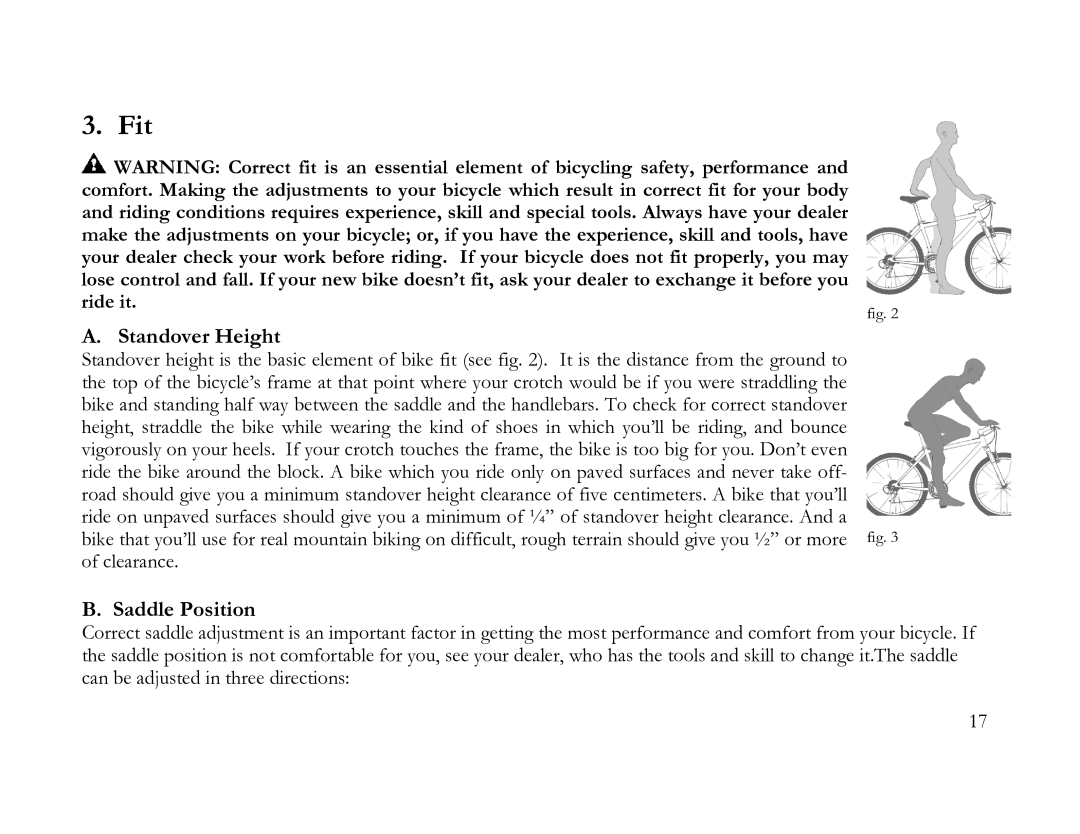
3. Fit
![]() WARNING: Correct fit is an essential element of bicycling safety, performance and comfort. Making the adjustments to your bicycle which result in correct fit for your body and riding conditions requires experience, skill and special tools. Always have your dealer make the adjustments on your bicycle; or, if you have the experience, skill and tools, have your dealer check your work before riding. If your bicycle does not fit properly, you may lose control and fall. If your new bike doesn’t fit, ask your dealer to exchange it before you ride it.
WARNING: Correct fit is an essential element of bicycling safety, performance and comfort. Making the adjustments to your bicycle which result in correct fit for your body and riding conditions requires experience, skill and special tools. Always have your dealer make the adjustments on your bicycle; or, if you have the experience, skill and tools, have your dealer check your work before riding. If your bicycle does not fit properly, you may lose control and fall. If your new bike doesn’t fit, ask your dealer to exchange it before you ride it.
A. Standover Height
Standover height is the basic element of bike fit (see fig. 2). It is the distance from the ground to the top of the bicycle’s frame at that point where your crotch would be if you were straddling the bike and standing half way between the saddle and the handlebars. To check for correct standover height, straddle the bike while wearing the kind of shoes in which you’ll be riding, and bounce vigorously on your heels. If your crotch touches the frame, the bike is too big for you. Don’t even ride the bike around the block. A bike which you ride only on paved surfaces and never take off- road should give you a minimum standover height clearance of five centimeters. A bike that you’ll ride on unpaved surfaces should give you a minimum of ¼” of standover height clearance. And a bike that you’ll use for real mountain biking on difficult, rough terrain should give you ½” or more of clearance.
fig. 2
fig. 3
B. Saddle Position
Correct saddle adjustment is an important factor in getting the most performance and comfort from your bicycle. If the saddle position is not comfortable for you, see your dealer, who has the tools and skill to change it.The saddle can be adjusted in three directions:
17
